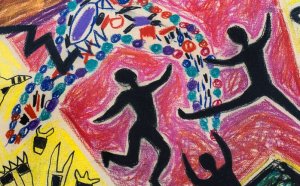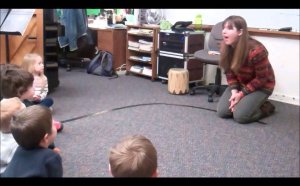
Music lesson plans for Kids
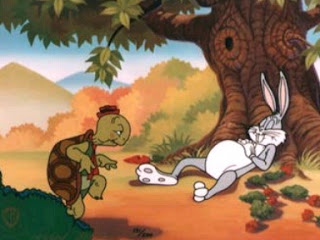
Music not only has the power to stimulate the mind, enrich the heart and soothe the soul; it also helps you meet educational objectives and learning outcomes for your students. The following lesson plans are examples from other music educators of practical, effective, and fun activities for grades K-5 to help you teach the basics of music to your students!
This is a great story to demonstrate fast and slow.
Here’s a good recording that the kids can act out.
Disney Silly Symphony version
Living Books version
After listening/watching a version or two, have the students pretend to be either a tortoise or hare while listening to slow or fast music while moving in online.
______________________________________________________________________________
I use the term: “bubbles” to describe when students use personal space. We pretend to turn on our bubbles around our bodies by snapping above our heads. When I play music or sing, students may move around the room with their bubbles on, but they may not TALK or TOUCH anyone or anything. If they do, their bubble pops, and they are out. In the younger grades, I often do bubbles the last few minutes of the lessons. Here are some songs we use with bubbles.
Gallop
Walk and Stop
We use it in 1st grade for “beat” vs. “no beat.” When I play something with a beat, they must stand still and bounce. When I play something without a beat, they must move around the room with fluid movements.
We do it in Kindergarten with loud and soft. I play Sousa’s Stars and Stripes Forever with my hand on the volume to make the dynamics more pronounced. Students march when they hear loud and stand still and bounce when they hear soft.
 For Kindergarten long and short sounds, students make long and short steps to the music.
For Kindergarten long and short sounds, students make long and short steps to the music.
Students can walk in bubbles to demonstrate FORM. For instance: they must change the way they walk for Section B. Or sometimes I hand each student a card with A on one side and B on the other. They hold up which section is playing while they walk to the music.
Try this book with the younger ones. It uses lots of descriptive words to describe animals. I start by reading it with students listening and looking at the pictures. Then I read one page at a time while students are scattered around the room in bubbles. After each page, I play something on the keyboard that reflects the mood while students move expressively. I don’t let them run or crawl, because I don’t have a big enough room.
I highly recommend bubbles! In addition to being a great way to experience music kinesthetically, the kids love it!
Another good song:
Billy Barlow –
Instead of “hunting, ” substitute locomotor movements.
“Let’s go walking…”
“Let’s go jumping…”
“Let’s go hopping…”
“Let’s go galloping…”
“Let’s go skipping…”
“Let’s go side stepping…”
“Let’s go leaping…”
“Let’s go crawling…”
Other options:
“Let’s go limping…”
“Let’s walk slowly…”
“Let’s walk quickly…”
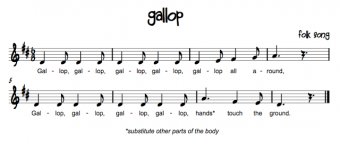 “Let’s go tip toe…”
“Let’s go tip toe…”
“Walk like a robot…”
“Walk like a penguin…”
Subject: Music
Grades: K, 1, 2, 3
This lesson plan is designed to teach students the concept of rhythm in a song, by listening to music and playing instruments to represent actions.
The goal of this lesson plan is for students to learn how to keep a beat with the music.
Required Materials: Variety of rhythm instruments (shakers, maracas, rain stick, wood block, finger cymbals) and a copy of the “What Would I Do”
song available for free at:
Anticipatory Set:
- Have the students watchPeter and the Wolf and talk about how each character was represented by a certain instrument.
- Tell students they will do a song where they select an instrument that will represent an action that happens in the story.
Activity:
- Play the songWhat Would I Do? for the students so they can hear where their action in the story happens in the song.
- Select 6 students at a time and have each student choose an instrument to represent their sound in the song/story.
(1st student: action of rain, 2nd student: action of jumping in a puddle, 3rd student: action of walking in the mud, 4th student: action of hopping in grass, 5th student: action of skipping in the driveway, 6th student: action of running in the backyard) - While these 6 students are using their instruments during the song, have the rest of the class do the actions in place (i.e. jumping, walking, hopping, skipping, and running).
- In the last part of the song, have the students play their instruments all at once.
Plan for Independent Practice:
- Assessment based on objectives: encourage the students to be creative in coming up with their instruments and rhythms but also ask them why they chose the instrument they did.
- Adaptations (for students with learning disabilities): many instruments are available for students with disabilities to play.
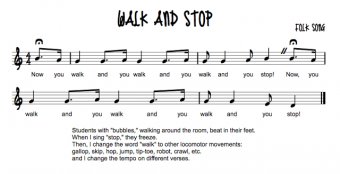 Subject: Music
Subject: Music
Grades: PreK, K, 1, 2, 3, 4, 5
Title – KitKat 8th Notes
By – Rebecca Henders
Primary Subject – Music
Grade Level – pre-K – elementary
Here is a fun idea I picked up for teaching 8th notes.
Everyone gets a KitKat bar. Start by talking about eating the whole candy bar themselves, then what they would do if a friend came along and wanted some (most kids will say “split it in half”, although I’ve gotten some fun answers like “eat it really quick before you could get any”). The kids then split their KitKats in half (these are the easiest ones to use because they are perforated – I tried Snickers once in an emergency, huge disaster) and you can illustrate that you don’t have 2 new candy bars (beats), but 2 halves of the same old candy bar (beat); that each one is smaller (shorter/quicker); each 8th note gets half of a candy bar (beat) etc. They never forget about 8th notes after that, even though they sometimes still tell me “when you see 8th notes in a song you cut all the candy bars in half.”
Subjects:Art, Music
Grades:PreK, K, 1, 2, 3, 4, 5
Title – Music Symbols
By – Rebecca Wszalek
Primary Subject – Music
Secondary Subjects – Art
Grade Level – PreK-5
Objective: Students will practice writing music symbols, dynamic markings, etc.
Materials: Sidewalk chalk, a nice day
Procedure:
Students are given one piece of sidewalk chalk per person. They are also given boundaries, since you will be outside. Pick a nice sidewalk area, preferably away from heavy traffic. Call out the music symbol you want your students to draw: treble clef, bass clef, even the staff. You may even let them choose which symbol or note they want to draw (that will guarantee success). This can be simplified for younger students so that they draw a quarter note or the pattern: ta ta titi ta. For 4th and 5th graders learning about meter, you can call out a time signature and have them compose a measure with the correct number of beats.
This lesson can be used as a good review and reward for any grade level. It also works well during times when a lot of testing is taking place. It was great to be outside and learning at the same time. It was also an added plus when the students received praise and positive feedback from their teachers, classmates and friends.
YOU MIGHT ALSO LIKE
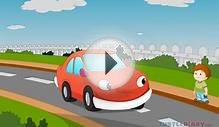
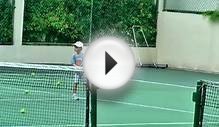
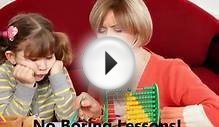
Share this Post
Related posts
Native American Music lesson plans
Lesson Four- The Strength of Native American Music The following lesson is designed to be used after viewing all or part…
Read MorePreschool Music lesson plans activities
The Music Rhapsody preschool program offers your school much more than just a singer with a guitar. Music Rhapsody’s trained…
Read More
